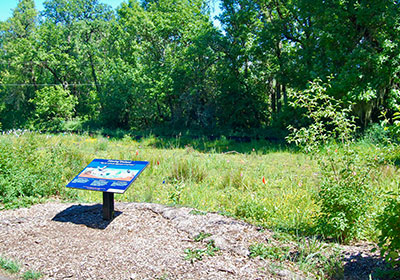Goals
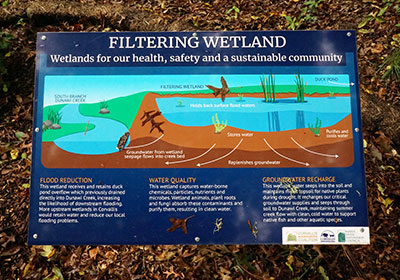
To resurrect a traditional wetland that had been drained and has lost all wetland functionalities and benefits, improve the water quality of water entering the South Branch of Dunawi Creek and to develop the wetland of a demonstration project with public interpretation.
Background
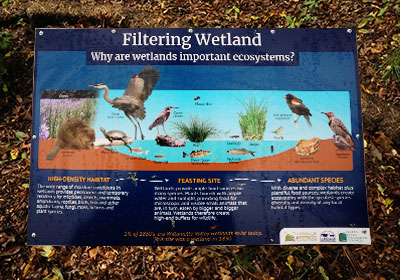
The lower elevation area of Starker Arts Park site along Dunawi Creek was historically a large wetland site that provided high hydrological and ecological functionality for the Dunawi Creek system. The presence of many eager beavers and plenty of willow trees resulted in beaver dams, holding water back in successive wetlands and braided channels that spread the water across the landscape. Today, with our dearth of beaver dams and the prevalence of deeply incised single channel drainage creeks, only 1% of the Willamette Valley wetlands existing 200 years ago in this area remain today. The wetland ecosystem provides carbon sequestration, clean water, water abundance in the summer and a healthy ecosystem; all of which had essentially vanished.
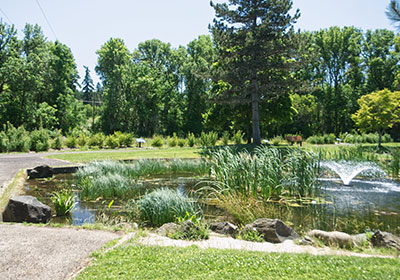
The regenerated wetland area is south of the Starker Arts Park Duck Pond and on the south side of the multimodal path. This wetland site is managed by the City of Corvallis Public Works Department. In 2018, staff from the City of Corvallis Public Works Department invited the Corvallis Sustainability Coalition’s Water Action Team and the Marys River Watershed Council to partner in a wetland regeneration project on this site. We worked as a team to plan and implement the project, each organization using its unique organizational advantages to effectively complete the project in a relatively short time frame and with economic efficiencies.


We drew up the plans, received approval from the City, sent them to the State government for permitting approval, received it and started in-ground work in 2019. Branching side channels were dug from the Duck Pond overflow outfall to move the water toward the east and west sides of the field.
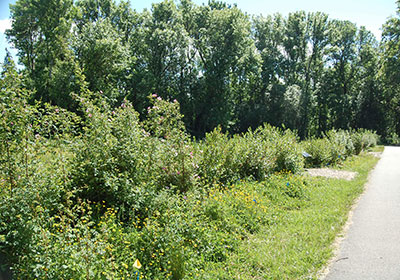
We then filled in the historically-trenched drainage channel from the Duck Pond to the South Branch of Dunawi Creek with the soil removed from the trenching of the lateral channels. Remaining extra soil was used to build a berm so we could plant a hedgerow of twelve species of native shrubs as a beautiful, pollinator- attracting buffer between the multimodal path and the wetland. Before planting the shrubs, we mixed in a few truckloads of rich, aged compost from SoilSmith Services to give the planted shrubs a healthy start.
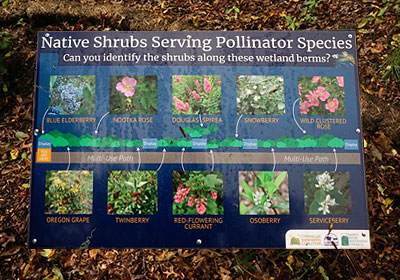
The shrubs we planted on the berm include:
- Mock orange
- Nootka rose
- Oregon grape
- Osoberry
- Red-flowering currant
- Serviceberry
- Snowberry
- Twinberry
- Western spiraea
- Wild-clustered rose
We planted over 900 native plants in the low-elevation, regenerated wetland. The primary species in the wetland included camas, rush, sedge and willow.
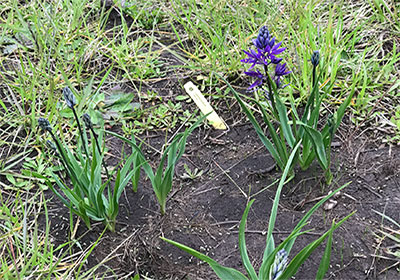
- Camas is the primary plant-based First Food for the Kalapuya who have inhabited this land for at least 14,000 years. Camas patches have been methodically removed since Euro-American settlement and continue into 2022. We are attempting to reverse this trend and planted hundreds of camas bulbs in this wetland.
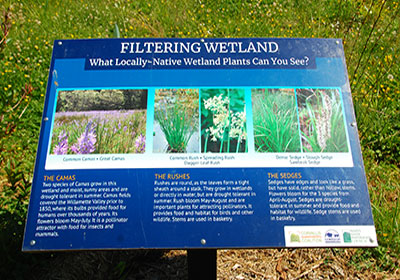
- Rush is a graminoid – a grass-like herbaceous plant and is often the most abundant plant species in a freshwater wetland. The stems are round. It is an important pollinator, providing habitat for birds and other wildlife. The stems are critical for Kalapuya basket weaving and other Kalapuya technologies. We planted three species of rush in the wetland.
- Sedge is also a graminoid – a grass-like herbaceous plant, but its stems have edges. It provides habitat for pollinator insects and birds, as well as being the host plant for some species. It is also used by Kalapuya for weaving technologies. We planted three species of sedge.
- Pacific Willow is a multi-stemmed shrub that can grow up to 30-feet tall. It can grow in standing water, stabilizes the soil and provides food and habitat for many wildlife species. It is a favorite food and building material for beaver. It is also an important weaving material for Kalapuya. Like camas, rush and sedge, it is a critical plant species for a functional wetland.

We also planted shrubs along the east, south and west perimeters of the wetland to provide wildlife habitat, pollinator opportunities and an obvious and aesthetic wetland boundary for the site.
Additional native shrub species we planted along the east, south and west perimeters that were not planted on the northern perimeter berm are:
- Blue Elderberry
- Ninebark
- Salmonberry
- Thimbleberry
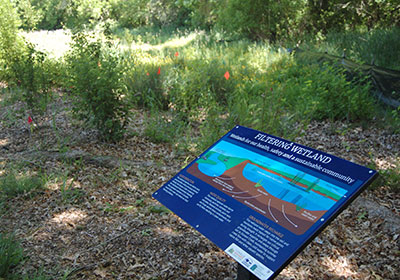
We installed six interpretive displays along the Multimodal Path explaining the elements of the wetland and the location of the wetland in the Dunawi Creek Watershed System. The display subjects are:
- Benefits of Wetlands for Humans
- How the wetland works
- Map of Dunawi Creek watershed and corridors
- Native shrub species on the northern perimeter berm
- Wetland plant species
- Wetland wildlife
Accomplishments 2018-2022
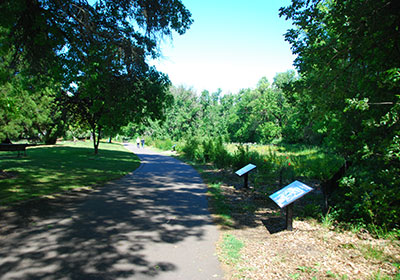
- Restricted flow of polluted runoff (excessive loads of nitrogen and phosphorus) from the Duck Pond into the South Branch of Dunawi Creek
- Diverted the nitrogen and phosphorus loads (pollutants for creek water) to the soils of the field/wetland site, where nitrogen and phosphorus are now soil fertilizers
- Planted over 985 native shrubs, perennials and graminoids in the wetland and on the berm buffer
- Installed decaying logs over the swales, where they provide habitat for insects, transport across the swales for small terrestrial animals, and allow roosting places for birds, amphibians and turtles
- Designed, printed and installed six interpretive displays placed along multi-modal path
- Provided on-going mulching, watering and weeding of planted areas
- Instructed more than 100 high school and university student volunteers
2022 Work Plan
- Weed and mulch young native plants
- Add more decaying wood across swales, where needed
- Maintain interpretive displays and their viewing areas
- Plant more camas
